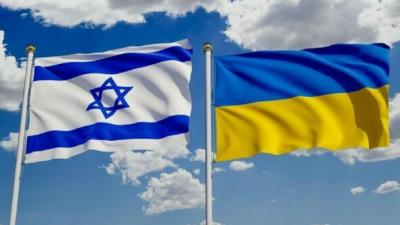The 21st century is turning out to be far more bizarre than anyone had anticipated. The geopolitical realm certainly warrants that characterisation and on the currently more divisive conflicts, the rising right-wing camp is divided in more ways than one.
For those faithful spectators of mainstream media, posturing is easy: Western legacy media has made it abundantly clear that both Ukraine and Israel are victims and therefore deserve the sympathy of the public. The school of thought closest to this perspective is the neoconservative movement. Risen to prominence during the W. Bush administration, the ‘neocons’ believe that Ukraine and Israel are what Mike Pompeo designated as the ‘three lighthouses for liberty’. Along with Taiwan, Israel and Ukraine are deserving of support because their political regimes are democratic and respect the rule of law. The neocons look to the USA especially, as ‘the leader of the free world’, bearing the responsibility to help defend free nations, ever since the onset of the Cold War and to this day. Because Israel is a multi-ethnic, persecuted religious minority and originating in a diaspora, many north Americans have a particular cultural sympathy towards the Medinat. Neocons are prone to view conflicts in the light of the 1930s and 40s Europe, with NATO aiding Ukraine and Israel, echoing the Allies coming to the rescue of invaded Poland and France.
On the other end of the spectrum, it is religion that mostly informs the ultramontane position. Especially attentive to papal statements for guidance (the Pope resides beyond the Alps, hence the moniker ‘ultramontanist’), they regularly present themselves as adversarial to Israeli positions informed by a fundamental hostility towards institutional Judaism which biblically victimised Jesus Christ. Often exhibiting some form of antisemitism, Catholics in particular are not fond of the State of Israel because it creates a parallel religious authority to their own, over Jerusalem and the Holy Land. Under Islamic dominion, the city was only of relative importance to Muslims and behind Mecca and Medina. After the end of the crusades however, a number of treaties was negotiated between European states and Islamic authorities in Jerusalem, to safeguard the right of pilgrimage to Christians as well as of worship within the holy city itself. All such treaties were mediated by the Holy See and because Muslim authorities were not secular, the respect for the ‘people of the book’ was not only political but also canonical. A secular Israel whose national identity is anchored on a faith based in the Holy Land therefore undermines the Vatican’s status and legitimacy in the region, twofold: politically and spiritually. Regarding Russia, the ultramontanes observe a general resurgence in religious devotion in the country and an open ecumenical dialogue with the Catholic Church which is different from the Ukrainian reality. Ukraine is more influenced by protestant movements than Russia and has recently sought to forcefully nationalise the Orthodox Church within its borders which was, until the start of the war, under the umbrella of the Moscow Patriarchate. Whereas the Kremlin frowns upon the LGBT agenda, the Kiev governments have strived to promote it, even mandating a gay pride parade in the Ukrainian capital under armed escort. Ultramontanists thus view Moscow and Ramallah more favourably and Pope Francis has gone as far as to denounce Israeli action in Gaza as ‘terrorist’. Their perspective could perhaps be equated with the Papal excommunication of the Fourth Crusade: led by Venice it devastated the fellow Christian Byzantine Empire, giving birth to the short lived and artificial Latin Empire of Constantinople.
Then there are those who stress racial motives as the chief deciding factor. The identitarians of the West have the peculiar position of supporting both Palestine and Ukraine. Under the lens of Caucasian purity and the threat of international Jewry, Israel is the ultimate evil, even if it sides with Ukraine. Arabs have always been allies and therefore the defence of Palestine is a foregone conclusion; any argument for the destruction of the State of Israel is welcome. Ukraine may be deeply involved with the international Jewish conspiracy but it is also where the neo-Nazi movement has found a sanctuary for training, financing and arming as well as the opportunity to fight the Eurasian barbarians in the front; a 21st century version of the Battle of the Catalaunian Plains.
The Paleoconservatives are perhaps the rarest of the currents, advancing a historicist perspective on geopolitical matters which drives them to grant more value and credence to older nations. Paleocons identify with the Napoleonic era framing of conflicts, as confrontations between revolutionary entities and reactionary coalitions. Therefore, both Ukraine and Palestine are regarded as revolutionary and recent constructs that do not pass the test of time. This school of thought acquired political form with ‘fusionism’ or the coming together of economic libertarians and religious evangelicals in North America. Barry Goldwater and Pat Buchanan were the most accomplished form of its political aspirations. Many paleocons are not unconditional proponents of Israel or Russia and can criticise them at times but for the most part, such criticism stems from the desire for the US not to keep external entanglements. Peter Hitchens wrote that As soon as Israel began its bombardment of Gaza, the superbly cynical global anti-Israel propaganda machine whirred smoothly into action. And Israel was transformed in a few hours from victim into villain. Notably, both Russians and Israelis have chosen a somewhat conservative form of regime, firmly anchored in free market economics and a strong military apparatus.
The whole issue could almost merit a political compass of its own. Nevertheless, the nuances of these different points of view may help explain the different motivations shown by governments around the world.






Comments (0)